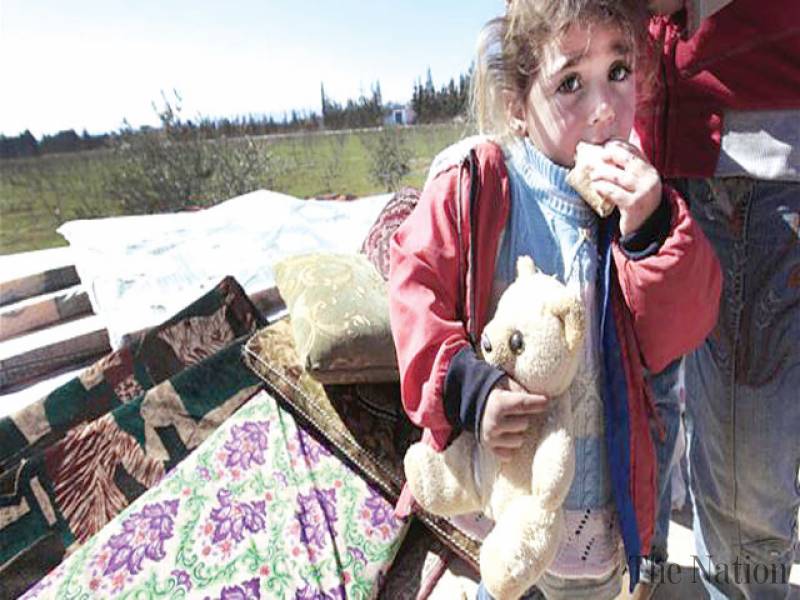-
Tips for becoming a good boxer - November 6, 2020
-
7 expert tips for making your hens night a memorable one - November 6, 2020
-
5 reasons to host your Christmas party on a cruise boat - November 6, 2020
-
What to do when you’re charged with a crime - November 6, 2020
-
Should you get one or multiple dogs? Here’s all you need to know - November 3, 2020
-
A Guide: How to Build Your Very Own Magic Mirror - February 14, 2019
-
Our Top Inspirational Baseball Stars - November 24, 2018
-
Five Tech Tools That Will Help You Turn Your Blog into a Business - November 24, 2018
-
How to Indulge on Vacation without Expanding Your Waist - November 9, 2018
-
5 Strategies for Businesses to Appeal to Today’s Increasingly Mobile-Crazed Customers - November 9, 2018
Syria war fueling child labor in large numbers, report warns
“Just when we thought things could not get worse, we are forced yet again to make yet more cuts”, said Muhannad Hadi, WFP Regional Director for the Middle East, North Africa, Central Asia and Eastern Europe. Three out of four working children surveyed at the Zaatari refugee camp in Jordan said they suffered from health problems, according to the report.
Advertisement
“As families become increasingly desperate, children are working primarily for their survival”. These included encouraging more income-generating activities for adults, pushing for funding toward improved access to safe and effective schooling, increasing research on the worst forms of child labor and developing programs to stop them and further investing in existing child protection services.
“The Syria crisis has dramatically reduced family livelihood opportunities and impoverished millions of households in the region”, Roger Hearn, Save the Children’s Middle East and Eurasia director, said in a statement.
These boys and girls often work long hours in hazardous conditions for little pay.
In Jordan, close to half of all Syrian refugee children are now the joint or sole family breadwinners in surveyed households, while in some parts of Lebanon, children as young as six years old are reportedly working. The child workers start at an early age – in Lebanon, children as young as 6 are working, while in the Jordan Valley, almost one in five children working in agriculture who were surveyed was under the age of 12.
The demands of earning a living are among the top reasons cited for the withdrawal of Syrian children from school, adding to fears that the war is producing a “lost generation”.
Syria has been in a state of a civil war since March 2011, with government forces battling several militant groups in the country.
“Syria’s children are paying a heavy price for the world’s failure to put an end to the conflict”, it noted.
According to its 2014 report, the initiative has had some success with 440,000 more children in Syria going to school compared to the previous year.
United Nations funds also aim to help more than 20 million local people in communities hosting refugees in Turkey, Lebanon, Jordan, Iraq and Egypt.
Advertisement
An estimated 64.7 per cent of people in Syria live in extreme poverty, unable to meet basic food and non-food needs. We provide children with healthcare and immunization, clean water, nutrition and food security, education, emergency relief and more.





























